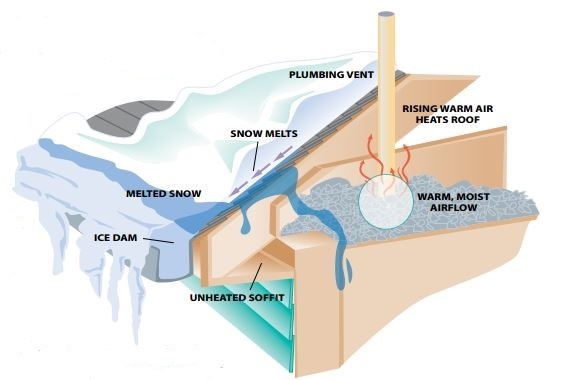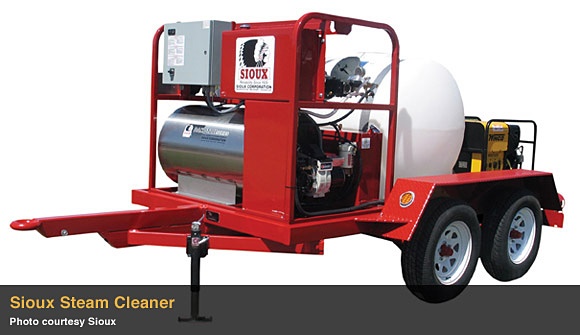Ice Dam Relief
by Hoffman Weber Construction, on February 16, 2014
Ice dams don’t just happen. Attics warm from air leaks, poor ventilation and inadequate insulation while the area over soffits and gutters stay cold. As rooftop snow melts, it refreezes along the eaves and can back up under shingles and cause costly water damage below.

The real solution is to fix the attic and install a proper roof with sufficient ice and water membrane and effective valley flashing and drip edge. But what do you do to avoid water damage if your roof is already snow-covered and ice dams are on their way?
Symptom relief
First, clear roof snow from the ground using a long handled roof rake (actually more like a monster plastic hoe than a rake). The more snow you can remove, the better. The bottom six feet and low-pitched roofs are most critical. The less snow that melts, the less that can refreeze and form dams.
If possible, don’t wait until a big thaw or rain storm is imminent. It’s a lot easier to remove snow when it is fresh and soft than after it has crusted over or started to melt. And forget about getting up on the roof. Snow-covered roofing shingles are slippery and brittle. You could crack the shingles or worse yet fall.
Roof rakes come in two styles. Most are designed to pull snow down. One, the MinnSNOWta Roof Razor, works on the push. It features a blade that rides above small wheels and undercuts the snow like a giant cheese cutter. A slippery plastic sheet trails behind to help the loosened snow slide down the roof.
Damage control
If ice dams have already formed, melt them rather than chipping at them. Ice clings tenaciously to rough, brittle roof shingles. Go at the glacier with a claw hammer and you will almost certainly remove pieces of shingles with the ice.

Steam is the best approach to remove large, thick ice dams. Steam machines differ from warm water pressure washers because they use much hotter water and a lot less force. This approach is much less likely to damage roofing materials.
When dams are just beginning to form, you may be able to lay a temporary electric heat cable over the dam and melt channels to drain ponds as they form. If you are tempted to try ice-melt chemicals, use them sparingly to form a few vertical channels through the dams. It would take far too much ice melt chemicals to soften the entire dam. Chemicals can corrode metal fasteners, flashing and gutters discolor shingles and harm shrubs. But weighed against interior water damaged, a limited chemical attack may be reasonable. Don’t pour corrosive chemicals directly into gutters to melt ice. Your primary goal should be to prevent water from pooling above the ice dam, not necessarily getting it to flow out downspouts.





